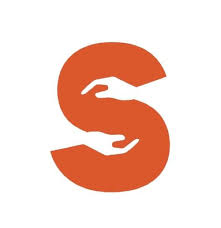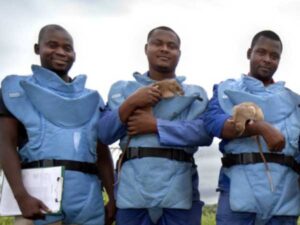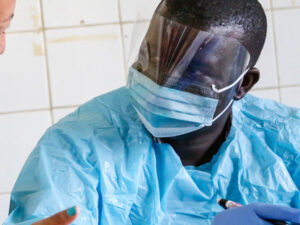The Share Trust supports collective action for community resilience by amplifying and uniting Self Help Groups and connected organizations around the world.
Courtenay Cabot Venton of The Share Trust spoke with Ashley Hopkinson on December 7, 2023. Click here to read the full conversation with insights highlighted.
Ashley Hopkinson: Can you please introduce yourself and describe for me the problem that The Share Trust is working to solve and how it is actually solving it?
Courtenay Cabot Venton: My name is Courtenay Cabot Venton, and I’m the Executive Director of The Share Trust. I am trained as an economist. So my whole career has really been focused on supporting bilateral donors to evaluate the types of poverty reduction interventions that have the biggest impact on poverty and to use rigorous economic tools to try to see where we should strategically place our money to have the biggest impact on poverty with limited dollars. That has been really fun because it means I’ve never been a sector specialist. I’ve worked across every sector that you can imagine.
About 10 years ago, I was asked to evaluate a women’s self-help group model in Ethiopia. This is a very simple model. It’s groups of 15 to 20, mostly women. You do also see other marginalized groups, it’s not exclusively for women, but I tend to refer to women because they mostly gravitate to the approach. They meet each week, they start small savings, they start small businesses. In many ways it looks similar to a savings group or Village Savings and Loan Association, but they’re fundamentally different in that they take a very long-term approach and their first entry point is that we are going to work together to create change for ourselves and our community. That unlocks a really interesting aspect of social capacities and empowerment. I was asked to evaluate this model in Ethiopia. I was blown away when I met the women. They were creating the most amazing change in their communities. All they wanted to do was tell me about all the things that they were doing and how incredible it was. I came back and I just said, “This is incredible. I need to figure out what’s going on here.”
The evidence base, because of course I’m an economist and everything has to be backed by evidence, was also unbelievably compelling. There’s actually a meta-analysis of six randomized controlled trials (RCT) in Asia. So, the best evidence you can get that shows that just being in a women’s group reduces maternal mortality by 37%. I just thought to myself, why are we not talking about this at every workshop that I go to? So to get back to your question, I set up The Share Trust because the problem we were trying to solve, which might be a little bit different than other social entrepreneurs, was how do we most cost-effectively tackle poverty so that we can help the most number of people? This approach really felt like it was something that could do that. I loved its simplicity, I loved the fact that it could go to scale and that there were networks of these groups all over the world that we could be leaning into to try to support them.
The main reason why I set up The Share Trust, I kind of went in kicking and screaming because I didn’t want to set up another international non-governmental organization (INGO). But after a lot of consultation with colleagues, I really realized that there wasn’t anyone convening a community of practice for these self-help groups and the organizations working with them, and I wanted to fill that gap. That was the starting point for The Share Trust.
Ashley Hopkinson: That’s great. What about The Share Trust is distinctive to what’s happening in the space? What makes the approach of the organization stand out in the way you do the work?
Courtenay Cabot Venton: There’s three things. The first two are specific to the self-help group model. I recognized that we spend a lot of time focusing on individual leaders and activists, and that’s really important. But I felt like we had lost sight of the importance of collective action in the work that we do to address poverty and how incredibly important working collectively is, particularly for the most marginalized who may be more nervous to stand out and fight for their rights if they’re on their own. I also felt that we have spent so much time focused on outputs and practical interventions, which makes sense because it’s easy to put in a log frame. They’re much easier to communicate if you’re building a hospital or putting in a well or whatever the case may be. But there’s actually a really substantial evidence base that shows that poverty doesn’t shift unless people have a sense of self-efficacy, empowerment, agency, and that those qualitative factors are actually fundamental to shifting poverty outcomes. That was the second piece.
The third piece that I think is distinctive about what we do is that we have a second initiative called the Local Coalition Accelerator, which works with networks of self-help groups. There’s a robust evidence base that shows that when you layer self-help groups with access to information and services via local organizations, that it really leads to transformative change. We have been working with coalitions of local actors grounded in engaging with their community through self-help groups and other community-based structures, and there we’re really trying to shift large scale funding to work differently. We’re a little different in that we’re not just focused on direct implementation. If anything, we spend more of our time building evidence and advocacy around why large scale financing needs to do things differently, and then building bridges between that large scale financing and local actors who can deliver on that in terms of their community priorities.
Ashley Hopkinson: How do you reach the people that you want to work with and you want to make a difference with?
Courtenay Cabot Venton: It’s a great question. We find that there are larger networks of self-help groups and there are some INGO partners that are working through their country programs to introduce the idea of a self-help group. One of the reasons why I fell in love with them is because once you seed the approach, you can basically get out of the way. After the first self-help groups have met for a year, they all decide to start facilitating the next self-help group with all of their friends who now want to be in their own self-help group. It very quickly goes viral without external intervention. I also have met a lot of grassroots community-based organizations that use self-help groups, even if they don’t call that by name. Because if you are in a community, and I think we can all identify this, if you identify a need that you really want to address, the first thing that you do is rally your friends around to say, “Okay, how are we going to do this? Who has what skills? Who can we draw upon? Let’s meet once a week. Let’s figure this out.” A lot of the community-based organizations have started from that place, and because savings groups are fairly ubiquitous in the global south, tend to lean into that type of a model of meeting each week, starting small savings so that they can then support the activities that they want to undertake.
I often say it would be amazing to have a map with pinpricks of light where all of these groups are, because there’s so many of them. Sometimes they’re networks, sometimes they aren’t, but the work that they’re doing is really always quite amazing. Then in terms of the local organizations that we work with, we really go via existing networks. We look for global south networks or organizations. There are a lot of intermediary conveners that are trying to work across networks of local organizations and we ask them to support us with finding local organizations that can then work with the self-help groups to make sure that they have access to the services and goods that they need.
Ashley Hopkinson: We were talking about evidence earlier, and I just love people’s stories. Could you share a story of impact with me, an example that illustrates the impact of your work?
Courtenay Cabot Venton: Yeah, absolutely. I’ll go right back to Ethiopia. When I first went to meet the self-help groups in Ethiopia, and I’ll never forget it, I spent a couple of hours with a woman named Meserat who told me her story. We sat in a small building with a tin roof and the rain was hitting the roof. I’ll never forget the drum of the rain on the ceiling. It was incredibly powerful. She had grown up in a village, but her family wasn’t too badly off. They weren’t wealthy by any stretch of the imagination, but they were managing school fees and all of these things. Her dad died and it threw the whole family into turmoil. All of her siblings had to leave school and work, and she ended up marrying her childhood village sweetheart, and they moved to Adama, which is just north of Addis Ababa in Ethiopia. She described having her first child and all they had was a mattress on a floor in a room. They had no food and he would go off to work and he would come back and bring just a small bit of whatever was left from the lunch that he was given at his job for her to eat. She was trying to breastfeed but had no milk because she didn’t have enough food, so things really kind of took a turn for the worse. Then she was invited to be part of a self-help group, and she described how things also got physically difficult with her husband. So she asked him to leave, and her self-help group really supported her. I remember her saying that when her mom died, all of her self-help group members came and slept at her house so that she wouldn’t be alone.
And slowly, through their support, because now she was a single mom in Ethiopia without parental support and with two little girls, she slowly started to build up a small business to make a little bit of money. She then managed to get a job with the government’s department for women’s affairs, and she bought her own house. And she said that then her husband came back and he said, “I can’t believe all that you’ve done.” They were able to reconcile. She was a great example of just like, again, it’s so simple and we can all identify with it, but the power of collective action and support to allow people to thrive and she wouldn’t have been able to otherwise. You’ll appreciate this as a journalist, Hugh Jackman kindly offered to post her story. I wrote her story for the Huffington Post, and Hugh Jackman offered to crosspost it on his social media. So she was very excited that Wolverine had shared her story. I love that story.
There’s also a colleague of mine who described meeting a self-help group in Rwanda where a local orphanage had taken their babies to put them up for adoption even though they had families. He said it was so deeply moving because the self-help group was demanding and demanding and demanding to have their babies back, they finally went to the orphanage and as a group surrounded the head of the orphanage and locked arms and refused to let him move anywhere until he gave them back their babies. You hear stories like this all the time, and again, you wouldn’t succeed in that if you were doing it on your own, but when you’re a group of 20 women, you can move mountains, right? Those are the kinds of stories that I think are incredible.
Ashley Hopkinson: I know you’ve been in this work for a while, so I wanted to ask what insights or teachable lessons you have that others could learn from?
Courtenay Cabot Venton: I will go on repeat to just say, collective action is an amazing thing, and that applies to any of us anywhere in the world, but especially where people are more marginalized and where it’s harder to express their voice. That’s a key one. I’d say on a bigger picture one, the importance of us as people based in the global North getting out of the way and really learning to lean into the power of local collective action. The fact that people know what’s going to make the biggest difference in their communities and who they need to talk to and who the power holders are and how they need to address that. I think that that’s also been a really important one that I know is also important to school.
Ashley Hopkinson: What I’m sort of inspired by here is the collective action model, and I wanted to ask why that model and not another? Why that strategy and not other strategies that are used to try to get to these really tough issues like poverty?
Courtenay Cabot Venton: One of my colleagues and mentors is a guy called Stefan Dercon, who was the chief economist at Department for International Development (DfID) for a long time, and then went on to set up the Mind and Behavior Research Group at Oxford. He’s studied this issue a lot, and he puts it in one of his papers that we assume that poverty is a resource constraint, that you don’t have enough money, enough medical care, enough education, and that that’s why you’re poor. He then kind of picks that apart. Obviously that’s a huge part of the problem, but he picks apart that there’s actually quite a few studies that show that even if people have full access to a range of resources, if their mental model and their social capacities aren’t strong, that they won’t access those resources. So you can give people access to free resources and they won’t take them up. Stimulating people to believe that they can create change for themselves plays a huge role in allowing all of the supply side interventions that are providing a hospital or school to really take hold.
I think for me, that was “why this model,” because I think it’s so much easier to report on, it’s so much easier to track. I can tell my grandmother about building a school. If I try to tell her about a systems change or a self-help group or whatever, it’s a lot harder for her to understand what I’m talking about, so it’s just a lot easier to do supply side interventions. I know that the evidence is incredibly compelling that unless we also address the demand side and stimulate that… People have all this within them, but sometimes it just needs to be shifted, especially in a context of aid dependency where people have gotten used to other people always having to come in and supply things to them. There’s something deeply powerful about that piece of it and you can’t put it so easily in a log frame, which probably it’s been overlooked.
The science shows that your perception of what you can achieve is shaped by your peers. It’s kind of like how they say in tennis, you should always play somebody that’s better than you because you’ll play up. One of my favorite studies from Stefan is that he showed people in Ethiopia a one-hour aspirational video. It was just four 15 minute clips of people in the same area who had managed to get out of poverty explaining how they did that. He was able to show incredible gains in terms of education, health and income just by watching a one-hour aspirational video because it changed their mental model to like, “Oh, if they did that, I can do that.” That shift is so important, and so I think, again, it’s a very simple example but so foundational to how we think about how we do this work.
Ashley Hopkinson: How as an organization do you measure success and what is the evidence that you’re making the progress that you want?
Courtenay Cabot Venton: I think thankfully we’re trying to do this at a good time because there’s been so much more movement in the last five years around feminist approaches to monitoring and evaluation and to really understanding that measuring impact needs to include one of those social capacity pieces. There are actually some reasonably robust sets of questions that you can ask about how empowerment has shifted, how agency has shifted, all of these things. The social capacity questions are one piece.
The other big shift has been that people are much more cognizant and respectful of and intentional about asking communities about how they feel about any type of intervention and really shifting towards community feedback being the basis. There is still a long way to go, but that has been a big shift that community feedback should be the basis of how we design, pivot, et cetera. I think that the idea of also engaging more qualitatively with communities to really hear what are you seeing in your self-help groups, in your communities, what are you concerned about? Is what we’re doing helping with that or would you rather it was something completely different? I think that also helps on the programmatic side because people have a lot less patience now. For example, if I said that in my proposal that I would put in 200 wells. I think donors are becoming more and more willing to hear six months in that the community has said, “Actually, we really don’t need wells. We need human rights training.” Pivoting to something totally different. Who are we to insist that we keep putting in wells if actually the community is telling us that something else has come up that really needs to be addressed. I think that also really helps because it’s not a direct kind of measurement and evaluation question, but it’s about being willing to see measurements and evaluation as serving sort of an adaptive management approach to how we do development that then in turn really supports the self-help groups as they walk through a year and things are always shifting and changing. It just really helps a lot.
Ashley Hopkinson: I think every social entrepreneur learns as much from the things that have worked as you do from the things that do not work. Could you describe something that you tried that didn’t work that taught you an important lesson, ideally something others can learn from?
Courtenay Cabot Venton: I’m going to answer that question with a slight side angle. I’d say when you talk about things that didn’t work, I think one of the things that I found most compelling and also most challenging is at Share Trust, one of our mantras is that we move at the speed of trust, and maybe I need to say we try to move at the speed of trust. Human initiative, behavior change, collective action, all of these things that we’ve been talking about, you can’t rush trust. What’s so interesting is that self-help groups historically have often been called solidarity groups because one of the key principles is that the people that come together, they don’t need to know each other and have friendships, but they need to have some sense of solidarity around a common business practice, around a common issue that they’re facing. It could be gender, whatever the case may be, because you have to build trust within the group in order for everything else to then come through. We find that with our coalitions as well, where we work with coalitions of local actors, which are kind of like a self-help group, but at an organizational level. Again, everything falls apart if they don’t trust. It doesn’t mean that they can’t have problems or difficulties or disagreements, but you have to have those networks of trust.
One of the things that has always made me nervous is that when people get really excited about self-help groups, some of the big funders can be like, “Great, let’s set up 50,000 in Nigeria tomorrow.” It doesn’t work that way, and you’re going to kind of create a ton of failure. It also is difficult because donors don’t always have the ability to move at the same speed that trust building requires. So like I said, it’s not really a failure, but I think it’s something that we struggle with a lot. I like the Gates term of ‘impatient optimists’. We get impatient for things to happen, and sometimes we have to just take a deep breath and say, “This is not something that we can push.” That requires a lot of patience. It takes a lot of time. Thankfully, there are so many groups already out there. So we try to encourage people to lean into what already exists if they want to support this work, and that way you’re building off of already existing networks that have trust built in. It’s a tricky one though.
Ashley Hopkinson: Aside from funding, are there any challenges that you faced in the past or that you’re currently facing? I don’t know if that’s scalability or accessibility or particularly in the global south, if you faced any political opposition in some of the work that you’re doing, if you can talk me through what’s going on.
Courtenay Cabot Venton: Well, to be honest, all of those things are there because any country that you’re working in, like going back to the roots, one of our biggest networks of self-help groups that we work with is in Ethiopia. They are still struggling with a very regularly changing security situation, so you’re constantly looking at disruptions. We also work with self-help groups in Afghanistan, which all fell apart with the takeover from the Taliban. Although interestingly, that in turn has presented an opportunity because it’s one of the only ways that we have to reach women with access to services and information. So there’s definitely all of those. I think for me though, when you say challenge, because we do a lot of work on systems change. A lot of our conversations are about how we work across the spectrum from a massive bilateral donor who’s trying to fund large-scale programming at scale through maybe two or three grants in a country. With community led development or humanitarian response, that requires an enormous amount of flexibility, patience, time, and even just the disconnect from a systemic level between thousands of incredible initiatives and organizations on the ground, matching that with two large scale grants. How do you do that in a way that breaks down power? How do you get donor systems to shift processes? How do you get them to come to the middle as well as the local actors to come to the middle? Of course, all of that has behind it histories of colonization and racism and all kinds of baggage that’s trying to be dismantled at the same time. My colleague, Chilande, will often tease because she’s Kenyan, and she says, “Guys, you need to remember that just because we have a program in Nigeria doesn’t mean that there aren’t power dynamics even within a community.” The whole way through, you’re trying to break down power dynamics from a large Western donor all the way through all the layers down to a community group that has its own power dynamics. How do you really navigate that and support that and facilitate that?
I think that shift in power, which takes many forms along that chain, is one of the biggest challenges that I think about a lot. I think part of what I find fascinating about the self-help groups is that I can really see that they shift power in the sense that a group of women who can’t leave their homes can now ask for a human rights curriculum with their mullahs in Afghanistan. It really helps to kind of democratize power if you can do that. I’m sure there’s some academics who would call me out on that one. But then through to how do you help funders and INGOs and the UN, some of the operators at the larger end of the spectrum, shift power to allow local actors to really lead on design and implementation in their communities.
I mean, there are a lot of people working on it, and there’s definitely progress. I think one of the wonderful things about the last three years and Black Lives Matter is that the tone of the conversation has just shifted fundamentally in terms of how we tackle this. But it is shifting a massive bared ship. It’s like, “Okay, you moved one degree to the left. How do we keep going?” And it just requires so much force to get that one degree, but then eventually it starts to go, right? So yeah, I’d say that’s one of the biggest challenges I think about on an almost daily basis.
For me, one of the shining lights is that in the last three years, there are now so many people across that whole spectrum who really want to see this change. It’s like finding the people who will sit down at the table with you and say, “Okay, right, how are we going to do this? I’ve got this constraint, you’ve got that constraint, but let’s figure this out.” There’s much more scope for meeting of minds than there was before, I think, which really helps a lot. It means it’s just that there’s a lot of tables to sit at, so it’s a lot of work.
Ashley Hopkinson: You mentioned you’re working towards systems level change in your field. Can you give me some examples of what you’re doing, as far as partnerships or policy changes or combinations of approaches or leveraging technology?
Courtenay Cabot Venton: We’ve been doing a lot of work, for example, with the Foreign, Commonwealth & Development Office [FCDO] and the UK government to look at specific country programs and really think about how they fund locally led initiatives. Within the things that they’re currently doing, how do they start to shift their systems and processes to be more conducive to local actors? The other place where we’ve seen a lot of traction lately is working with INGOs who I think have really had a bit of a reckoning. From a very practical perspective, how do we take a large consortium that’s trying to tackle food security in Northern Kenya? I’m just making this up. We’ve got loads of consortium partners and we’ve got a huge log frame with lots of objectives. The systems change piece in that is really redesigning how does that funding flow from a large donor through a UN or an INGO out to its partners and eventually to the community? How do we really start to shift to a model where the local actors are leading on design and implementation with support from the INGO, so it’s not just the INGO or the UN kind of dictating how everything should happen.
That’s a very sort of practical way that we’re trying to work with some of the players in the system to try to think about how we reframe the way that aid currently flows through the system. This past year we did a study called Passing the Buck, looking at the economics of localizing aid that ended up being cited quite extensively. It was in The Economist in May where we found that working through local intermediaries was 32% more cost-efficient than working through international intermediaries. So how could we start to shift the system to really look for those local intermediaries that are more connected to their communities and can deliver change?
Then I’d say the other big systems change piece that we’ve been doing, as related to the self-help groups, is for the first two years of COVID, I was helping to lead an FCDO expert advisory team on their global COVID response and had a huge amount of learning. I was exposed to 40 country offices on some of the constraints and the issues that they were facing. One of the things that really came out from that, we were focused on not on the health side of the COVID response that was led by a different team, but more on the effects of economic lockdown and making sure that people were getting access to either humanitarian cash or social protection transfers. It was very, very hard to deliver large scale cash rapidly without local networks. Who could help us with who was being missed? How do we sensitize so that we don’t create unrest? How do we ensure that there’s gender equity and social inclusion? All of these pieces that could only, coming back to that theme of trust, could only work if it was communicated by somebody who was trusted by the local community. So a lot of the work that we’ve been doing more in the systems change piece, is also helping some of these larger scale systems and aid flows to think about how do they work with local networks, with self-help groups to really formalize their involvement in making sure that everything that they do is kind of grounded in that community voice. We’re trying to really help to systematically embed that across some of these big funding streams, so that would be another piece.
Ashley Hopkinson: What do you need to see from other actors in the space?
Courtenay Cabot Venton: A lot more flexibility. I think flexibility might be the number one word. I remember maybe like 10 years ago somebody told me about wicked problems, and because I come from Boston, this is a reference that only Bostonians will understand, but we have a lot of Bostonians who use the word wicked in a non-academic way. And so I remember laughing, I was like, “What do you mean a wicked problem? What does that mean?” I remember thinking it was so funny because it is actually an academic term that describes the fact that in a system, when you solve one thing, you then change the parameters for everything else. So pushing forward progress in one area is then going to mean you’re going to have to revisit all the other areas to understand how they’re shifting. I feel like most things we do in poverty reduction take a linear mindset. If I put in a water well, people will have access to clean water and I’ll reduce diarrhea cases. That completely misses the fact that the linear impact chain is sitting in a wicked system where everything else is going to become disrupted in the process. Addressing these wicked problems with linear solutions just has never made any sense, but that goes back to the flexibility. Unless you’re willing as a donor or an implementer to say, “Hey, you know what? We’re going to throw everything out of the window and reframe for the next six months because guess what? This has kicked off, that’s happened.” The system parameters are changing. We’re not going to be effective at what we do. It’s just very hard because we have to be able to report on what we do. If that is constantly changing and you’re trying to report on different things all the time, it becomes messy. It’s hard to go to your stakeholders, whether that’s a taxpayer or a board or whoever, and say, “This is the impact we’re having.” And yet the irony is that we know that if we just follow that linear process, we aren’t having the impact that we want. You know, you might see impact in the year, “Hey, we reduced diarrhea cases by this amount,” but because you haven’t considered the system in two years, your water well or water pump is no longer delivering any benefit because we didn’t account for repairing it and who’s responsible for it and all those things. It’s just a very sort of short term thought process, and I think we’ve got to be better at embracing complexity and allowing for flexibility to do that.
Ashley Hopkinson: Yeah, I think that’s great. Flexibility is really important because changes are happening literally on the dime.
Courtenay Cabot Venton: Yes, and this year has told us that more than ever. Right?
Ashley Hopkinson: More than ever. So, the last question I want to ask you is how do you see your work evolving? What’s your vision for Share Trust in the next five years?
Courtenay Cabot Venton: There’s still a lot of work to do and a lot that we’re trying to test and understand in the work that we’re doing. We just agreed as a leadership team that our vision is to be small but mighty, that we don’t ever want to become a large organization implementing in lots of places. Rather, we want to be really helping to move the system. And if we do that well, one of the things that we committed to was that we get out of the way. One of our key metrics of success is not that we’re getting more funding and building bigger programs. Our key measure of success is that we’ve built a bridge so that local actors, whether it’s coalitions or self-help groups, are then accessing the financing and the support and leading on the design and implementation. So we’ll actually switch this year with one of our major programs in Uganda. We have been the grant’s prime for three years. We will now switch to them subcontracting us to provide this network of local organizations, a coalition with the support services that they want from us, but very intentionally moving to a position where we’re flipping the system. Otherwise, we’re just another INGO replicating the system that we’re all trying to kind of unravel and reframe. So for us, success is seeing the work that we’re doing scale like any other organization, but specifically it’s different because we want to see it scaled by us getting out of the way as opposed to us continuing to grow the work.
Ashley Hopkinson: Thank you so much, Courtenay.
Click here to read the full conversation with insights highlighted.
Ashley Hopkinson is an award-winning journalist, newsroom entrepreneur and leader dedicated to excellent storytelling and mission-driven media. She currently manages the Solutions Insights Lab, an initiative of the Solutions Journalism Network. She is based in New Orleans, Louisiana.
* This interview has been edited and condensed.
Search for other organizations utilizing collective action in social innovation.







